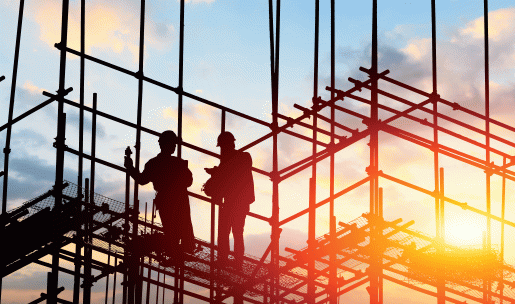
Housebuilding output posted its second-fastest monthly fall in more than three years, which saw the construction sector only register “a slight increase” in August.
Home building activity was the weakest of the industry’s three key areas, coming in at 40.7 on the S&P Global/CIPS UK Construction PMI last month, its fastest fall since May 2020. A mark of above 50.0 indicates growth.
The report says firms in this area, “widely commented on subdued market conditions and a headwind to activity from cutbacks to new build projects”.
By contrast, commercial building expanded “at a robust pace” last month, at 54.2, with the rate of growth holding close to July’s five-month high.
Civil engineering activity, at 52.4, also increased, although the speed of growth slipped to its lowest since April.
Overall, the construction sector notched up a growth mark of 50.8 in August, compared to 51.7 in July.
However, the survey says that “seasonally adjusted index tracking changes in total industry activity” mean that in fact there was “a slight increase in overall construction output”.
Across the industry, firms last month noted a modest downturn in order books, which was still the steepest since May 2020. It was also the second fall in new orders over the past three months.
The survey says: “Construction companies noted that rising interest rates and concerns about the near-term economic outlook had led to more cautious spending among clients, especially in the residential building segment.”
The Chartered Institute of Procurement & Supply chief economist John Glen points out that “new housing starts weakened” over the last month.
Glen adds: “The cost-of-living crisis continued to squeeze household finances and buyers were reluctant to commit in the shadow of potentially another interest rate in September.
“Housing activity fell at its second sharpest level since 2009, excluding the pandemic years, and overall new orders dropped at the fastest rate since May 2020.”
Beard Construction finance director Fraser Johns points out: “While the sector will be encouraged by news of a robust improvement in supplier delivery times and a stabilisation of costs, a decline in total new order volumes will certainly cause some concern.
“Although inflationary pressures have begun to ease, interest rates and borrowing costs still remain high, which will undoubtedly have an impact on some clients and their appetite and ability to commit to larger projects.
Johns adds: “As a result, we should expect areas such as commercial building and infrastructure new work to continue to lead the recovery effort, especially as frameworks continue to provide valuable projects and fill pipelines across the country.
“Nonetheless, we must remain responsible with our tendering and cost plans, all while maintaining a constant dialogue with clients to nurture confidence.”



